Gary Wain undertakes the strangest pellet test yet - domed pellets shot in reverse! That’s right, in this article Gary takes a selection of pellets, reverse loads them, and records their performance as scientifically as possible!
 credit: Archant
credit: Archant
It appears that our Editor, or as we writers are contractually bound to call him, ‘honourable leader, valiant dictator and defender of the shooting faith’, might have had a bit of a long paper round when he was younger. Indeed, if the evidence is anything to go by, said paper round might well be ongoing. You see, although I have no real idea of old Terry is, I have to say I never had him down as being in his late 20s to early 30s. The reason I say this is that I received this rather intriguing message from him a few days ago.
‘Here’s an odd one. When I were a nipper, almost 20 years ago, now, I used to shoot rats with pellets loaded backwards, i.e. skirt first. Yes, really. It was a thing back then. I’m still convinced these ‘backward’ pellets made a bigger hole in the mud and sludge around the pig farm where I shot most of my rats, and that they flew fairly straight out to 10 metres or so. I used Crosman Premier in .22, mainly, but H & N FT Trophy worked as well.
Could you do a feature on this, please? I imagine the pellets would have to be loaded manually, rather than via the mag’, but it would be really interesting to see what happens when a proper scientifical tester got to grips with it. I used a Theoben Sirocco, break-barrel, mainly, but my HW80 did the same job on those rats, and I shot HUNDREDS of them’.
I should add that the above message has been highly redacted and that I am more than delighted to comply with the request, especially as all threats of me having to spend an eternity in hell, shooting a PCP that holds just enough air for two shots before requiring 300 strokes from a pump to refill it; a springer with worn-out seals; and a CO2 pistol with a serious leak, have been removed. It also helps to know that the request comes as a result of a letter from one of our valued readers, a certain Mr Andrew Edwards, who described a similarly weird ballistic phenomenon when accidentally loading both first a .177 and then a .22 into his .22 Webley Longbow, only to have them land with the .22 dead centre, and the .177 slightly above.
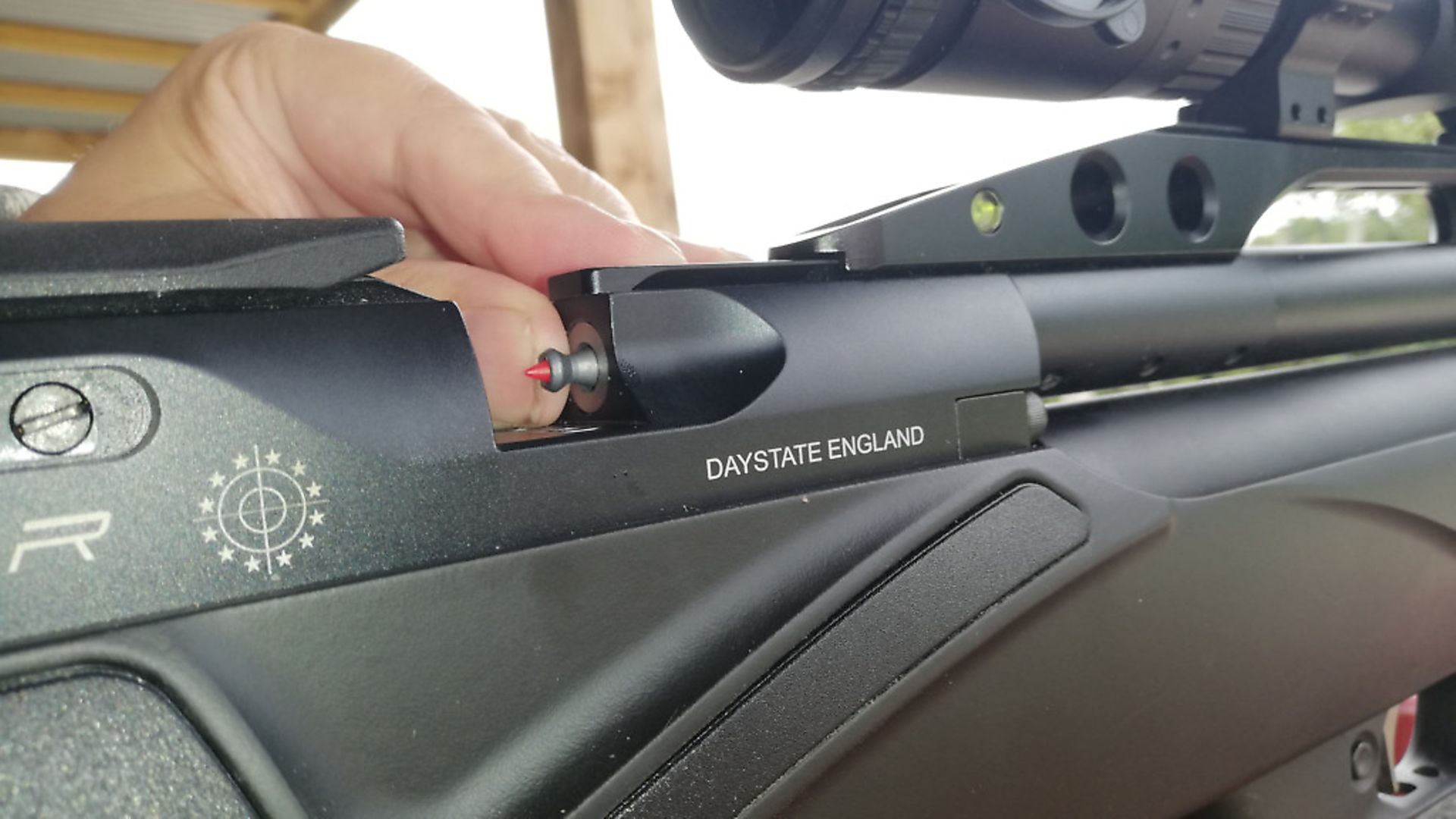 credit: Archant
credit: Archant
RECREATION EXCERCISE
So, with Terry’s pellet-testing gauntlet thrown down into the ‘mud and sludge’ of the pig farm, I can only assume that it’s my job to determine how best to recreate and if possible scientifically record the results. Anyway, as much as I want to use .177 for this, the pellets Terry used were .22, so .22 it is. At first view, this might seem a purely arbitrary capitulation, but it makes sense to examine .22 because owing to its greater size, the variances in its comparative dimensions will be more pronounced. If you’re not sure what I’m banging on about here, don’t worry – all will be explained. Remember, like the Winnie the Pooh, I am also a ‘bear of very little brain’, so I tend to keep things simple.
 credit: Archant
credit: Archant
PELLET SELECTION
The first decision I had to make was how to test the theory. In my mind, I could go one of two ways; the first is to select a handful of domed pellets from different manufacturers and shoot them backwards and see which did the best; the second was to select pellets of varying head shapes, and shoot them both forwards and backwards to see which fared best in regard to the variation in accuracy and deposited energy. As the first method was by far the easiest option, I decided to opt for the latter. To my eye, there are four main types of pellet; domed, wadcutter, pointed and hollow point, so if you haven’t already guessed I’m going to be testing one from each of these groups.
As with all testing, when looking for a set of comparative results, it’s important to mitigate as many variables as possible, so appreciating that I have chosen pellets with differing head designs, the only way I could really aim for some sort of parity in the rest of the test was to select pellets with, as close as could be achieved, minimal variance in overall pellet weight. As always, it was my good friend Tim, at Pellet Perfect, who came to my rescue, with a selection of .22s weighing in as near as can be, around the 16gr mark. Even with Tim’s help, it was still hard to decide which pellets to choose, but in the end I opted for the following selection.
 credit: Archant
credit: Archant
Domed pellet: Air Arms Field Diabolo
The AA Field is a classic waisted, domed pellet and one of the most popular on the market today. The Diabolo is 7.3mm long and weighs bang on the target weight of 16gr.
Wadcutter: Power-Force Sport
Serbian Manufacturers Power-Force were relatively unheard of until a few years back, when they started to make a bit of a name for themselves. I’ve chosen the 6.4mm-long Sport as the wadcutter for this test for two main reasons; firstly, it’s a pretty decent pellet in its own right, and secondly, at 15.4gr., it’s the closest I had available to the 16gr target.
Pointed: JSB Polymag
By all that is holy, I love this pellet, and can’t wait to see how it performs when fired ‘Bottom first’ at the target. Although it’s 10.3mm long, it extremely convenient that it weighs bang on 16gr.
Hollow Point: JSB Hades
If you’ve been reading my articles, you’ll already know that I’m a big fan of the Hades, but the question is, how well will the 15.89gr., 7mm long pellet perform when faced with the above competition?
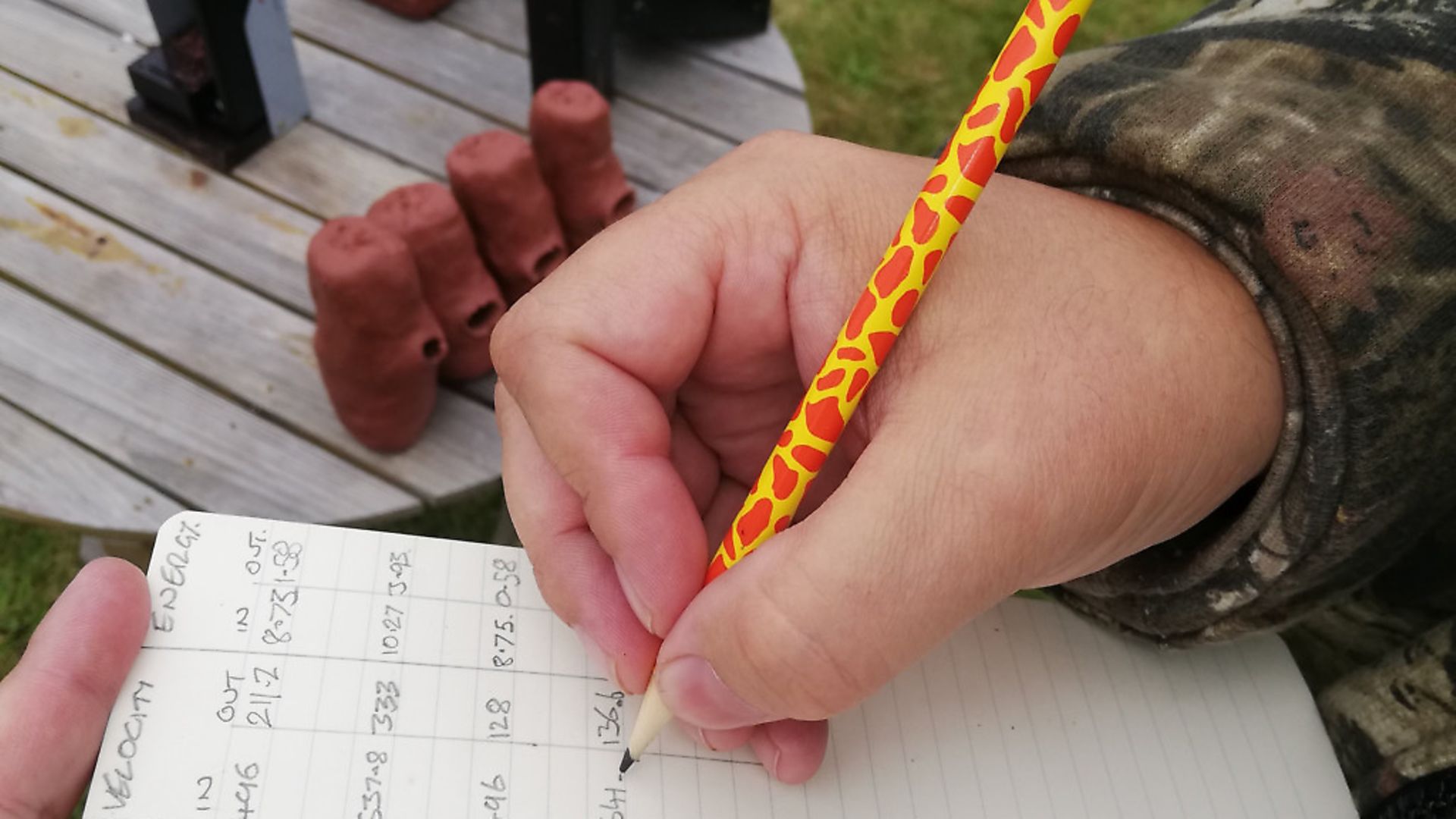 credit: Archant
credit: Archant
TESTING
For this month’s ballistic testing, I’ve shortened the range to about 10m because that’s the distance at which Terry purported to have been decimating rats back in the late 1800s. I will fire groups of five pellets both conventionally and then backwards into targets, and record the group size. I will then fire each of the pellets backwards into blocks of terracotta wax, taking plaster moulds of the cavities. In this instance I won’t be undertaking the usual chronograph tests on every pellet, instead I will favour the good old ‘how big is the hole’ metric as delineated by Terry. I will undertake a chronograph test on the domed pellet and whichever other pellet I think is worthy of further investigation, though. Wish me luck.
Technically, with the exception of the Polymag, all these pellets can fit into the magazine that comes with the Daystate Pulsar I use for testing, but it’s not an easy job, and there’s a good chance of splitting the rubber, and whatever the circumstance, that’s never a welcome outcome.
I also discovered that it’s no easy task to get the pellets into the breech manually, so if this is a technique you’re seriously considering for vermin control, you need to be aware that with a fumbling reload time of some 30 seconds or so, follow-up shots are going to be far from instant.
ACCURACY RESULTS
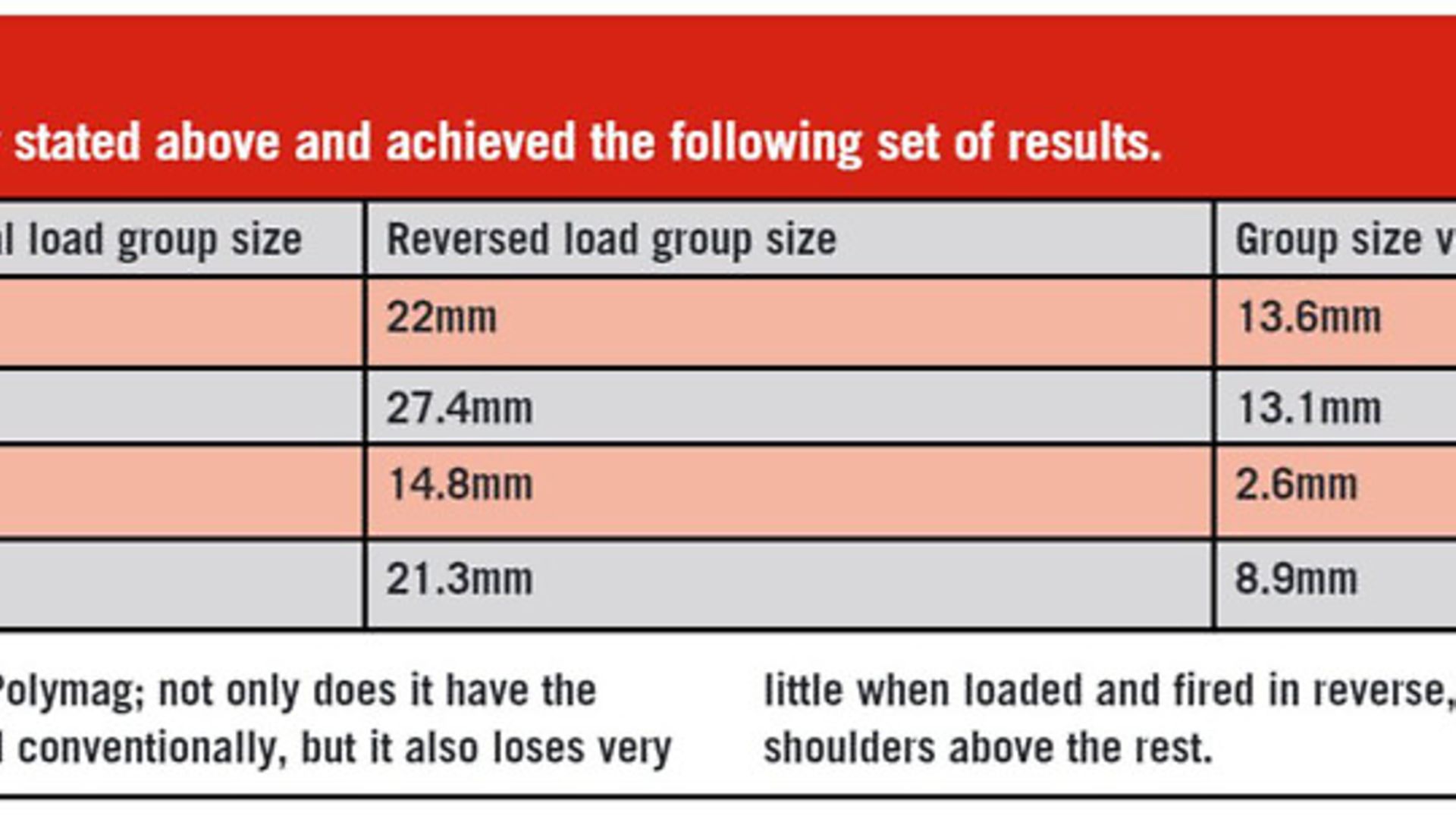 credit: Archant
credit: Archant
BALLISTIC RESULTS
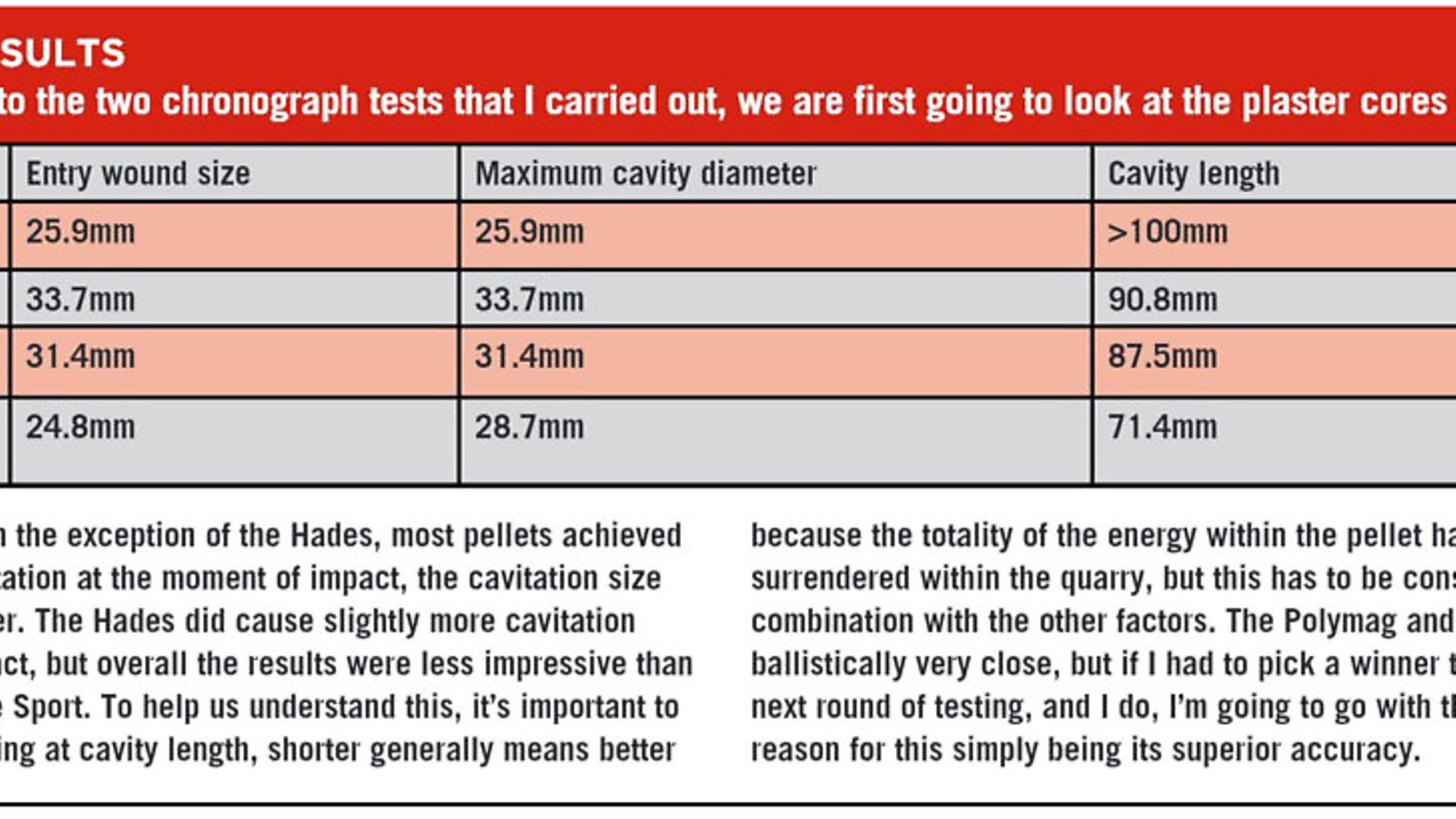 credit: Archant
credit: Archant
CHRONOGRAPH RESULTS
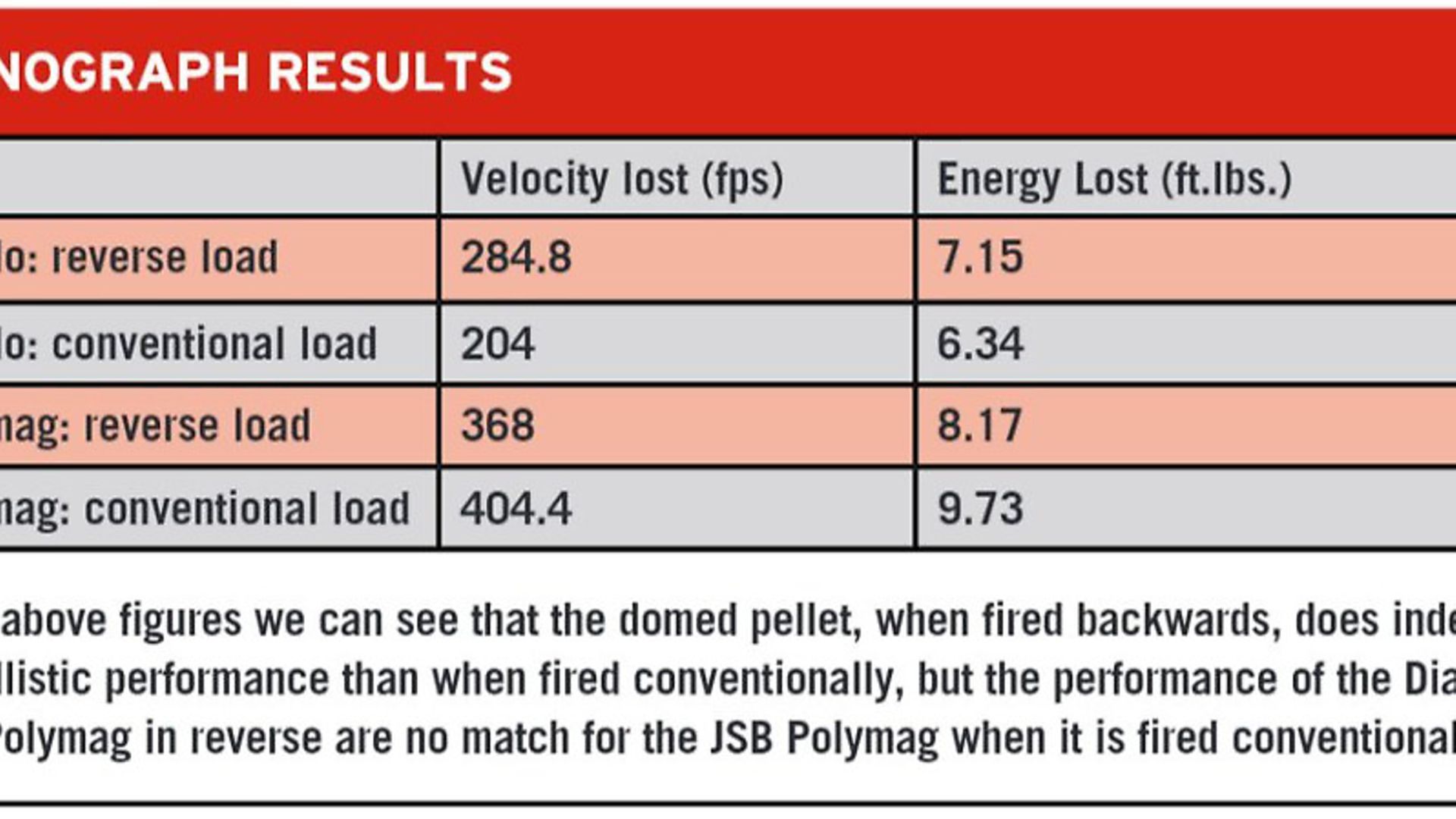 credit: Archant
credit: Archant
CONCLUSION
Having undertaken nearly five years of pellet testing, I’m starting to get my head around which factors influence both accuracy and ballistic efficiency. Being asked to carry out a set of tests in which the theories aren’t so much turned on their heads as presented back to front has required me to rewire the old noggin somewhat, and that’s even after I’ve dealt with the number of ‘does not compute’ signals that my hands and eyes have sent my brain as I try to shove a pellet in the wrong way round. In theory at least, the same principles should apply, but might need to be looked at from a different standpoint.
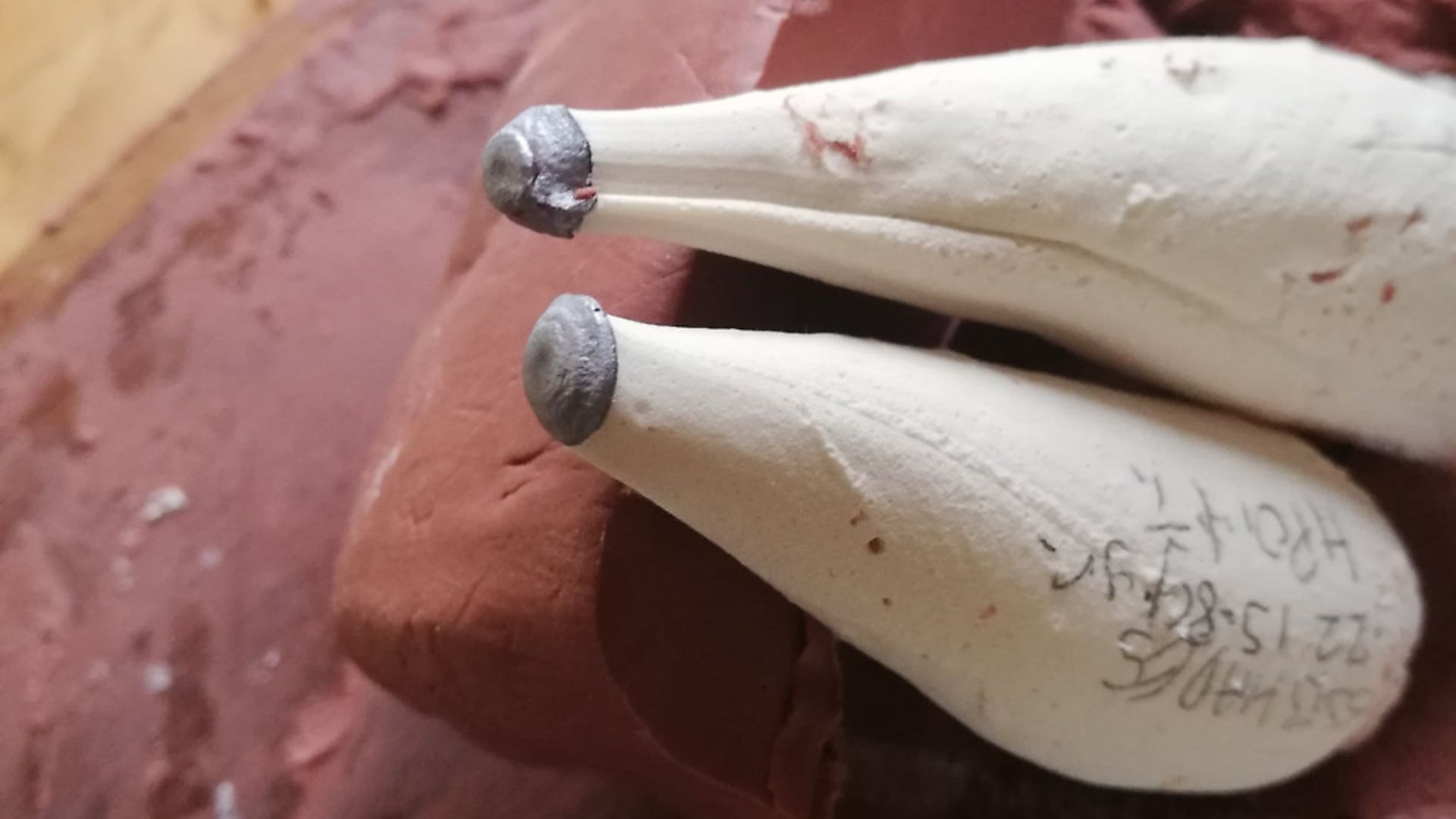 credit: Archant
credit: Archant
HOLLOWPOINTS
As all of these pellets are fired backwards, they can all be considered hollow points, and so we need to look at skirt thickness and depth because that will help us to understand the degree to which a pellet expands. Usually, of course, the skirt is also the part of the pellet that expands slightly as the pellet is fired, and in doing so establishes a grip on the lands of the rifling, ensuring a better or worse degree of accuracy. These pellets are being fired backwards, so the air from behind will not expand the skirts. Does this matter? Will the skirts expand to a degree as they accelerate into the resistance of the air as they progress up the barrel? To be honest, I haven’t a clue.
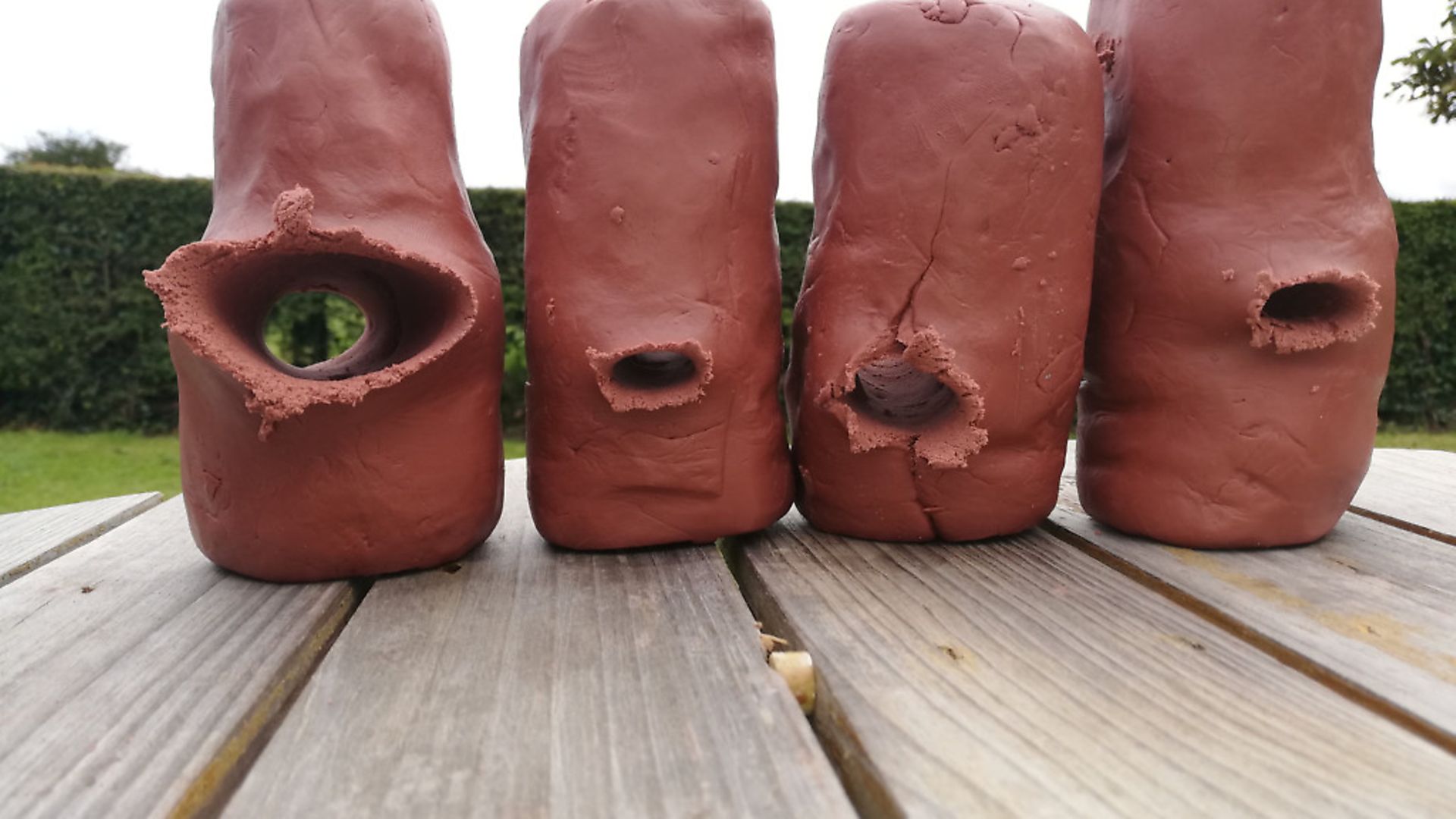 credit: Archant
credit: Archant
SECOND SKIRT?
What I have seen that might help to explain the results obtained from the Polymag is that it almost has a second skirt resulting from the hollowed cavity which necessitates the accommodation of the plastic tip, and what can’t be denied is that the Polymag was the only pellet that flew backwards, yet perfectly straight into the wax. It’s also blindingly obvious that although a reverse-load domed pellet does perform ballisically better than a conventional load, it’s not even close to beating a modern pellet which has been specifically designed to expand on impact.DON’T FORGET …
As always, if you happen to have any other ideas or if there are theories you’d like me to look into, then please don’t hesitate to contact the magazine and I’ll do the very best I can to research and deliver.
 credit: Archant
credit: Archant
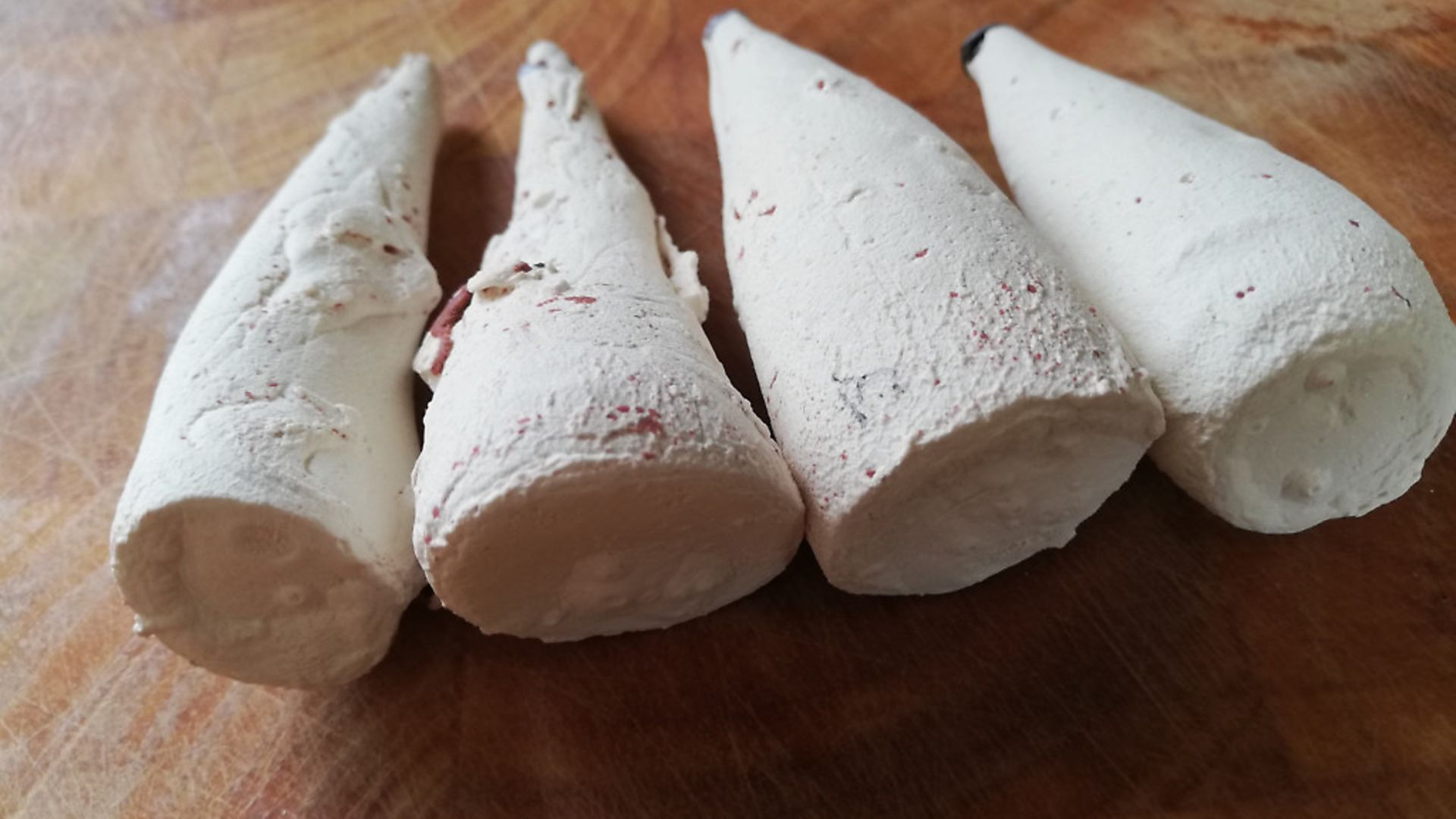 credit: Archant
credit: Archant